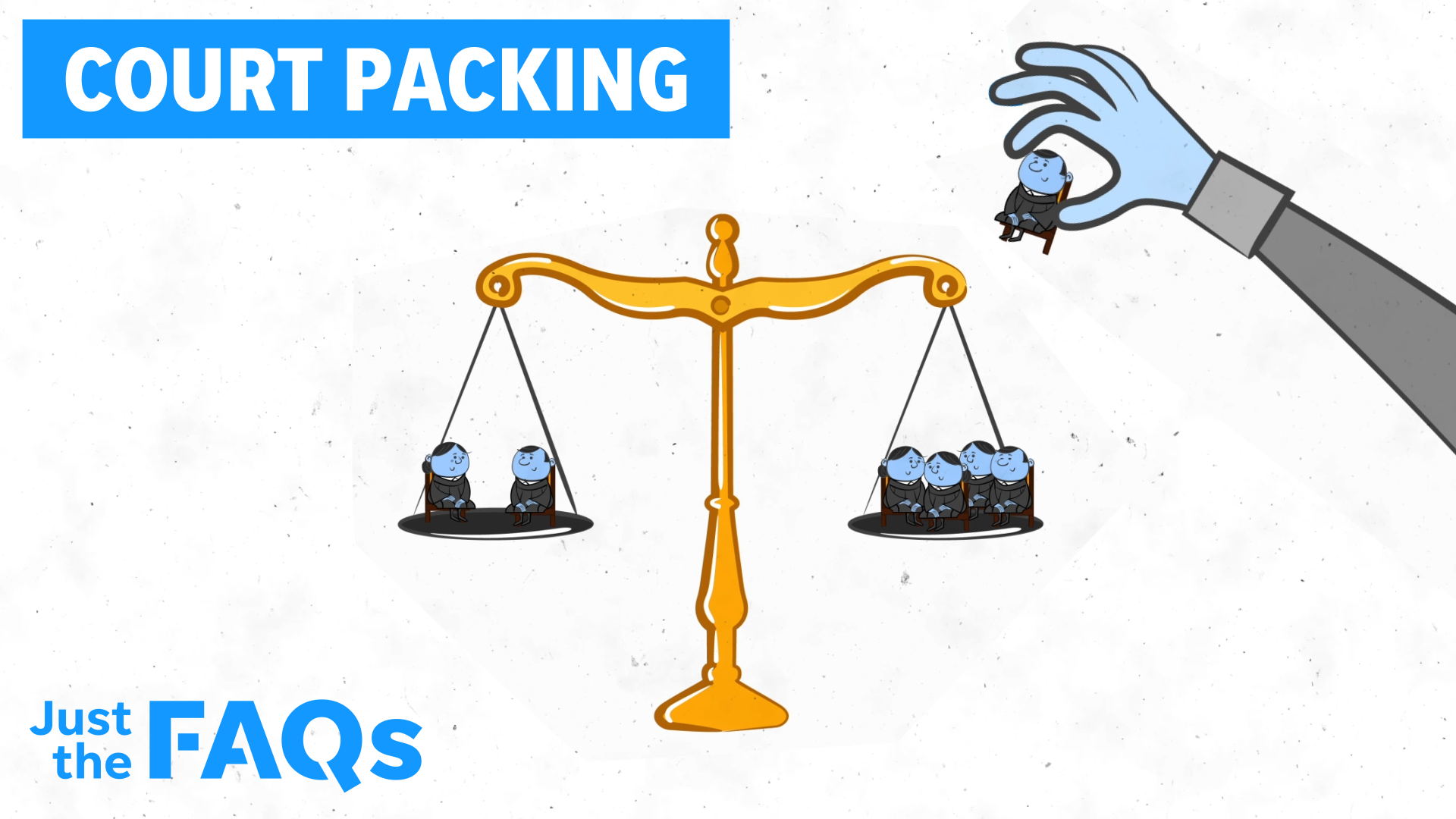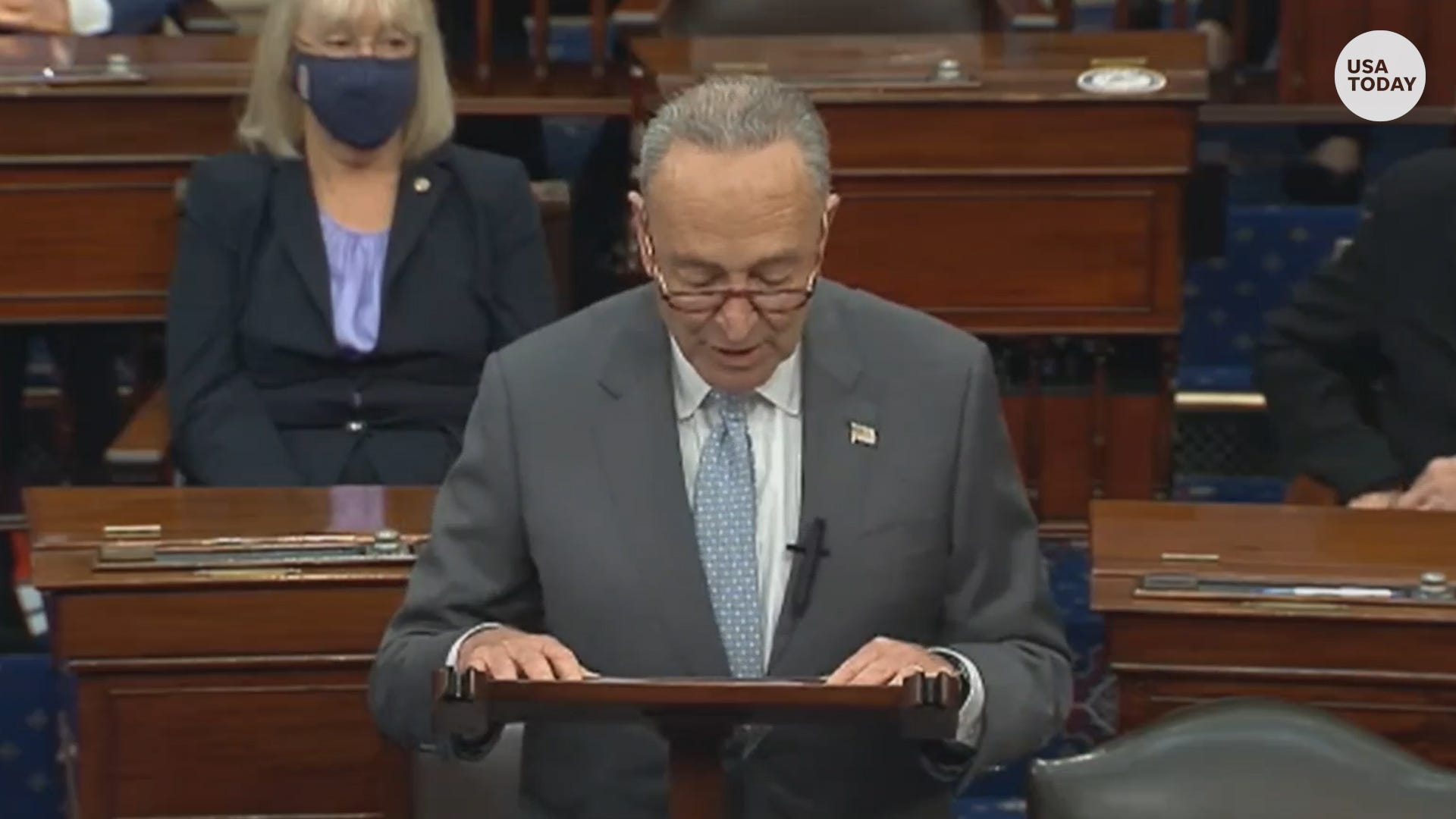Amy Coney Barrett confirmed to the Supreme Court, giving conservatives a 6-3 majority
Nicholas Wu , Christal Hayes | USA TODAY
WASHINGTON – The Senate voted Monday to confirm Judge Amy Coney Barrett to the Supreme Court, completing a sprint to place her on the high court just days before Election Day and solidifying a 6-3 conservative majority on the bench.
Barrett was confirmed by a slim 52-48 vote, along mostly party lines. One Republican, Susan Collins of Maine, joined the chamber's 47 Democrats in voting against the nomination. She is set to be sworn in at a White House ceremony Monday evening.
Barrett, 48, will become the fifth woman to serve on the Supreme Court, filling the vacancy left by Justice Ruth Bader Ginsburg, who died in September. Her swearing-in means she’ll likely be able to hear cases as early as next week, including a challenge to the Affordable Care Act that Democrats worry will upend the health care of millions.
The vote caps a confirmation process that – while at times respectful – fueled intense partisanship in the Senate, with the added drama of happening in the middle of a global pandemic and weeks before a presidential election.
Senators debated Barrett’s nomination over the weekend with both sides reiterating arguments sounded throughout the confirmation process in the lead-up to the final vote. For the final 30 hours of debate, senators stayed overnight from Sunday evening into Monday, taking turns holding the floor. Democrats warned of the consequences of Barrett’s confirmation for hot-button issues like the Affordable Care Act and election disputes, while Republicans lauded Barrett’s qualifications and touted her pending confirmation as a key accomplishment of President Donald Trump and Senate Republicans that Democrats would be unable to erode.
The White House is preparing to host a ceremony Monday evening where Justice Clarence Thomas will administer Barrett's swearing-in,
Barrett is required to take two oaths before she can officially serve on the high court, a Judicial Oath and a Constitutional Oath. She will take her second oath on Tuesday at the Supreme Court, where Chief Justice John Roberts will swear her in — officially allowing Barrett to start serving on the bench and weigh in on a host of crucial questions set to come before the high court in the coming days.
The court will be in session starting Nov. 2 and her addition to the bench means she will likely hear a case concerning the LGBTQ community and religious freedoms, along with a highly anticipated case that could decide the future of the Affordable Care Act.
'Totally irresponsible': Dems criticize Pence presiding over Amy Coney Barrett vote after aides contract COVID-19
Pelosi: Nancy Pelosi says she will seek another term as speaker if Democrats keep control of the House

Senators, throughout days of debate, traded barbs about the combative path that led to Monday’s vote and past refusals to take up nominees so close to the election. Just before the final vote confirming Barrett, the Senate’s top leaders offered forceful speeches displaying the divide on her appointment to the high court and what it could mean for decades to come.
Senate Minority Leader Chuck Schumer, D-N.Y., railed against Republicans in a heated and pointed speech about Barrett’s nomination, saying the Senate’s action would forever change how parties work together in the chamber and “give an already divided and angry nation fresh outrage.”
“History will record that by brute political force, in contradiction to its stated principles, this Republican majority confirmed a lifetime appointment on the eve of an election – a justice who will alter the lives and freedoms of the American people while they stood in line to vote,” Schumer said on the Senate floor before the vote.
He said Monday would “go down as one of the darkest days in the 231-year history of the United States Senate.
Senate Majority Leader Mitch McConnell called Barrett “a woman of unparalleled ability and temperament” and noted the threats some Democrats have made in expanding the Supreme Court or doing away with the filibuster if they win control of the chamber in the election. He said the threats amounted to a “hostage situation” over the courts. He said Democrats were applying “improper pressure to impartial judges” that amounted to “rule how we want, or we're coming after the court.”
“Elections come and go. Political power is never permanent, but the consequences could be cataclysmic if our colleagues across the aisle let partisan passion, boil over and scorch – scorch – the ground rules of our government,” McConnell said.
The fight over filling Associate Justice Ruth Bader Ginsburg's spot on the court started only hours after the liberal icon died Sept. 18. Trump and McConnell were left with the opportunity to appoint another conservative justice to the court just weeks before a contentious election that could put the White House and Senate in Democrats' hands.
Before Barrett was named Trump's nominee in late September, Democrats urged Trump and Republicans to wait on replacing Ginsburg, saying the winners of the Nov. 3 election should determine which justice will get a lifetime appointment to the nation's highest court. Democrats repeatedly pointed out that Senate Republicans would be going back on their word if they held a confirmation vote so close to an election, citing their 2016 refusal to consider President Barack Obama's nomination Merrick Garland about 8 months before the 2016 election.
Pack the court? Battles between Republicans and Democrats fuel clash over Supreme Court's future

Despite Democratic opposition – which included concerns over holding a confirmation process amid the COVID-19 pandemic – Republicans pushed forward. Barrett quickly started meeting with senators, confirmation hearings were scheduled, and Senate Republicans charted out a path to confirm Barrett before Election Day.
Barrett's four days of confirmation hearings passed without much of the drama Justice Brett Kavanaugh's proceedings had. Most senators announced their intention to support or oppose Barrett's nomination, or that of any nominee, by the end of September , taking much of the suspense out of the process.
More: Senate committee OKs Amy Coney Barrett. Here's what happens next in her Supreme Court confirmation
Recognizing they did not have the votes to block Barrett's nomination or significantly delay the process, Senate Democrats opted to highlight what they said would be the consequences of her confirmation to the Supreme Court, peppering her with questions during her confirmation hearings about her views on abortion, the Affordable Care Act and other controversial issues. The judge, however, largely declined to answer the questions, saying she would not comment on questions that could come before the court.
When the Senate Judiciary Committee, which oversaw her vetting process, took its vote to send her nomination to the full Senate, Democrats boycotted the vote and instead placed pictures of people on their chairs whom they said could be affected by the overturning of the Affordable Care Act.
Democrats repeatedly called the Judiciary Committee proceedings "illegitimate" and a "sham," though Sen. Dianne Feinstein, the top Democrat on the committee, faced criticism from progressives for her praise of the proceedings.
Contributing: David Jackson
More: Contact tracing and visualizing the people exposed to COVID-19 by Trump outbreak
Via PakapNews